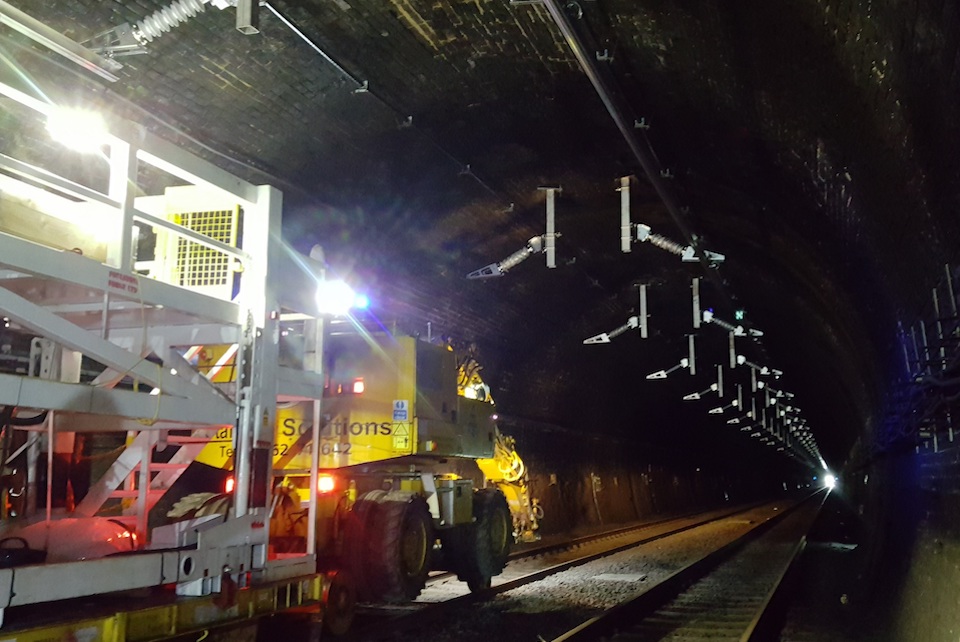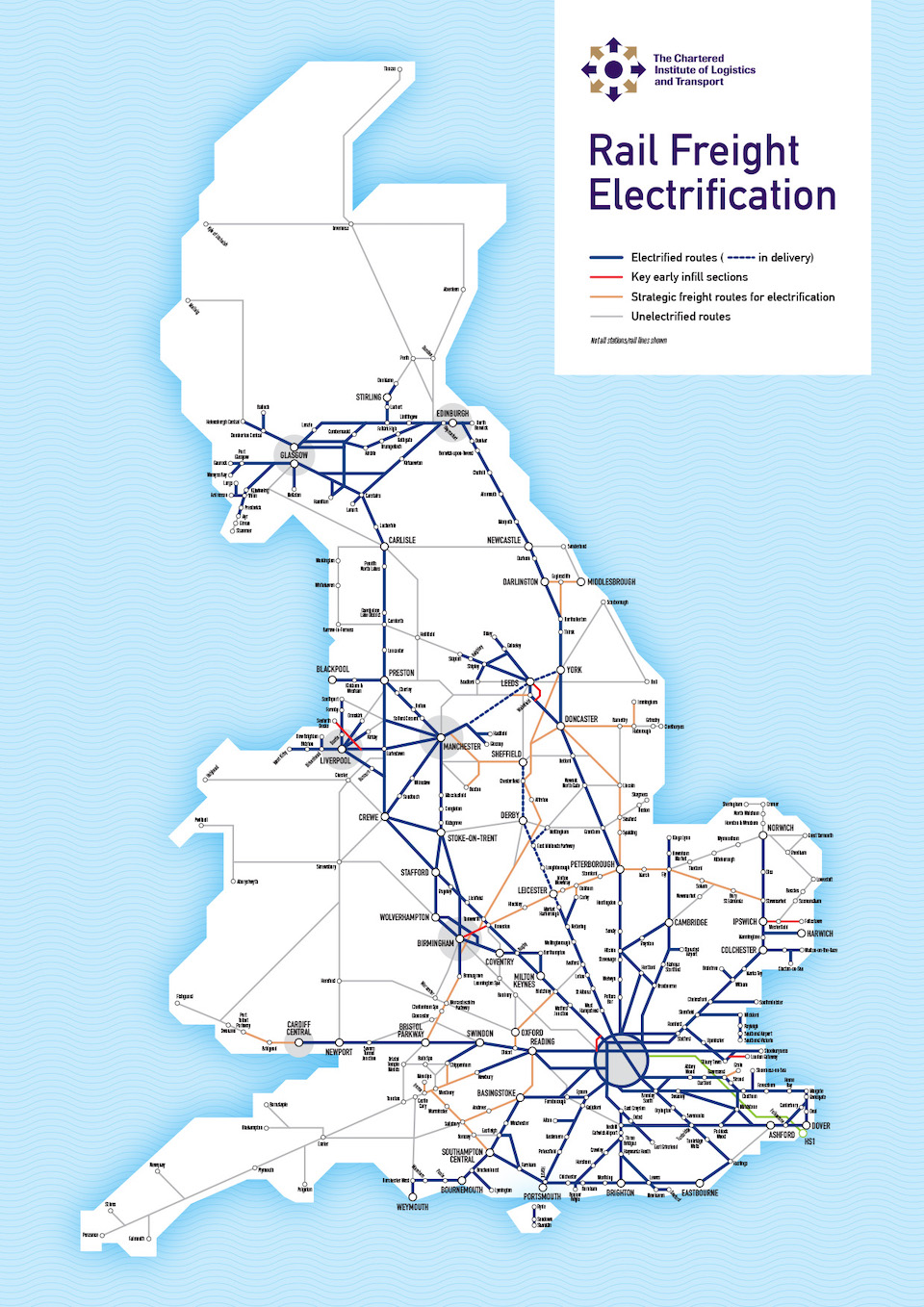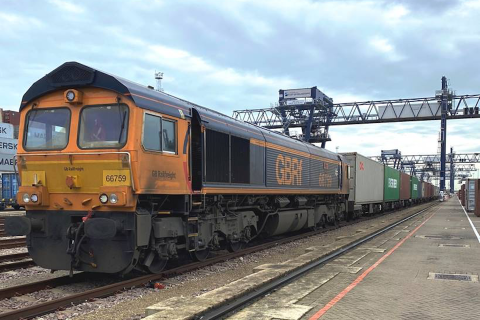UK industry gives cautious welcome for electrification reports

The Railway Industry Association, which represents the supply chain in the sector, has welcomed the UK parliamentary Transport Committee’s new report, Fuelling the future: motive power and connectivity. The RIA has also given an endorsement to the research from the Chartered Institute of Logistics and Transport, which has produced the Freight Electrification Map, a body of work which sets out a strategy for the electrification of freight routes. Both reports have returned a positive future for rail freight as the most critical part of the British economy, as long as the network is modernised and electrified.
Both reports, from the parliament and from the industry, call on the UK government to speed up the electrification of the railway network. The cross-party Transport Committee has told the government that it needs to do more to fulfil its ambitions of a net-zero economy by 2050. The CILT research confines itself to a more focused view on the railway network. Still, nonetheless, it concludes that investment in electrifying the rail network is not just desirable but vital if Britain is to catch up with competitor economies elsewhere in Europe.
Demonstrate the opportunity of electrifying rail freight
“Reports by both the Transport Select Committee and the Chartered Institute of Logistics and Transport clearly show that rail is not on track to help the Government achieve Net Zero by 2050”, said David Clarke, the technical director at the Railway Industry Association. “Both the TSC’s report, which urges government ministers to go faster when it comes to electrification, and the CILT’s roadmap, which sets out a plan to decarbonise 95 per cent of rail freight by the mid-2040s, are helpful and timely. The TSC report is very clear that with just 38 per cent of the rail network electrified and the Government committed to removing all diesel-only trains by 2040, there needs to be a significant acceleration of electrification on intensively used lines and the ramping up of hydrogen and battery trains on other parts of the network.

Sharon Kindleysides FCILT, Chief Executive of the Chartered Institute of Logistics and Transport, admitted that the work had implications for a number of government policies. “CILT is committed to helping policymakers, industry, and professionals play their part in the route to net-zero”, she said. “Our policy groups have worked tirelessly on this research to demonstrate the opportunity electrifying our rail freight sector presents. The CILT electrification strategy also strongly supports other policy imperatives, notably levelling-up and union connectivity and sees rail freight electrification as a key part of the route to net zero.”
Help achieve headline ambitions of government
Both bodies of work supported the “Levelling Up” agenda from the government. The policy is designed to increase the economic output, primarily of the north of England, to better resemble that of prosperous London and South East region. There is also hope that improving and electrifying more of the network will help achieve the headline ambitions of the Union Connectivity Review, a high-level document examining ways to improve communications between the four nations of the United Kingdom.
“The CILT map shows how 80 million miles [driven by diesel HGV [heavy goods vehicles] can be taken off the UK’s roads each year, as well as giving credible evidence that a rolling programme of freight electrification can be delivered at a lower cost than recent schemes, building on RIA’s Electrification Cost Challenge report”, added David Clarke from the Railway Industry Association. “In the coming months, RIA will be campaigning more intensively on the need to accelerate rail decarbonisation, championing not just the environmental and performance benefits, but also how investment in electrification supports economic growth and levelling-up”, he concluded.




